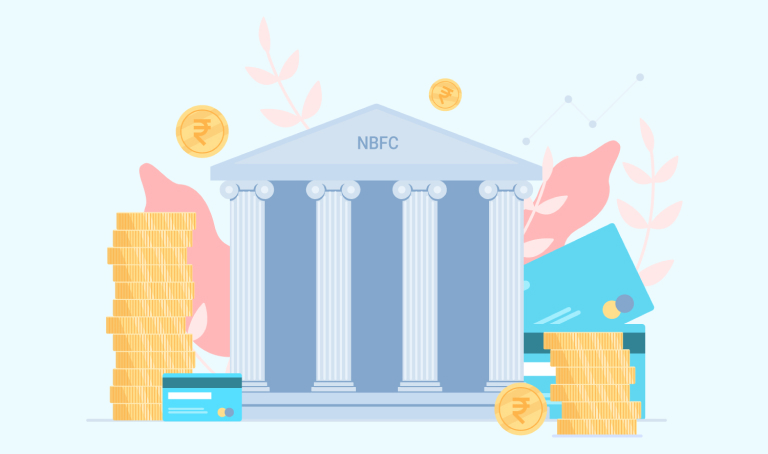Top 5 Features Every NBFC Software Solution Should Have in 2024
Updated On : Nov 2023
NBFCs are playing a crucial role in ensuring people living in India’s towns and villages have access to basic financial services. From small loans for setting up businesses to EMIs for two-wheelers that make life easier, their work impacts lives directly at the grassroots.
But as more people rely on NBFCs for credit, their workload is ballooning too. Handling so many loan applications, risk analysis of customers, tracking repayment schedules—it's getting challenging to manage these processes manually or using legacy software built for traditional banking.
This is why building cutting-edge software specially designed for the needs of NBFCs has become a key requirement today. With the right tech system powering their operations, NBFCs can set up digital workflows that automate mundane tasks like customer KYC verification, loan allocation based on pre-defined eligibility parameters, keeping tabs on overdue repayments, and so on.
Instead of fragmented tools and complex spreadsheets, smart NBFC software integrates the complete lifecycle on one platform, reducing operational bottlenecks. Staff efficiency goes up, faster expansion into new geographies becomes possible, and strategic decisions are enabled by intelligent analytics.
And for customers seeking loans, smart applications make document submission, eligibility checks, and status tracking simpler than ever before using their smart phones. Technology systems crafted specially keeping NBFC requirements in mind can accelerate financial inclusion in India to the next level.
Building the Ideal NBFC Software Solution
The growth of non-banking financial companies in enabling credit access for underserved communities, MSMEs, and innumerable other sectors highlights their crucial positioning. However, the diversity in operational models ranging from affordable housing loans to microfinance for rural entrepreneurs implies highly specific demands. Add intensifying competition, and the need for operational efficiency becomes paramount.
This is where a future-ready NBFC software solution holds the potential to be the ultimate power boost, allowing players to augment services while staying resilient, agile, and customer-focused.
Let's deep dive into its 5 must-have capabilities and features:
- Enhancing the Customer Experience
For the average person, accessing an NBFC loan involves considerable paperwork, visits to the branch, and status enquiries through calls due to process opacity. A superior customer experience entails simplifying document submission, tracking applications through self-serve options digitally, and providing anytime, anywhere services.
The right software solution makes this possible by allowing field agents to capture and upload data directly via digital devices that sync with central data repositories when online. Customers can thus complete application formalities in one visit. Further integration of eSign, eMandate, and other paperless systems minimizes physical trips to branches.
Unified dashboards provide anytime visibility into application status, repayment schedules, and outstanding dues. Custom alerts via email and SMS also foster process transparency. Through API integrations, customer data can also be synced from credit bureaus or employer systems for instant eligibility checks and faster decision-making by the NBFC.
Essentially, NBFC software that synthesizes information and engagement channels can significantly boost the customer experience.
- Boosting Lead Generation
In a competitive environment, relying solely on walk-ins rather than exploring new customer outreach tactics can be risky. The ideal NBFC software solution should encompass automation capabilities to run targeted location- and profile-based campaigns to drive leads.
Customers showing interest in loans on the NBFC website can be tagged for personalized emailers and offers by setting up workflows. Social media listening tools to identify people discussing relevant products provide another rich automation-ready source for lead generation bots to nurture prospects with helpful content.
Existing customer data also offers cross-sell and up-sell opportunities, which can be mapped through automated triggers. For instance, an education loan customer who has finished payments can receive a pre-approved home loan offer through the workflow. Lead scoring mechanisms also help assess interest levels for prioritized follow-ups.
- Adaptable and Future-Ready
The NBFC landscape sees frequent shifts, influenced by new regulations, changing customer expectations, disruptions by fintech entities, and internal diversification strategies. For instance, an NBFC with a significant presence in metro cities might decide to venture into Tier 2 and 3 regions requiring optimization of processes.
The ideal software must therefore allow room for evolution. This entails flexibility in modelling products, policies, and procedures without needing software engineering support. Through configuration layers, NBFCs should be able to introduce new offerings, eligibility criteria, associated documents, interest rates, and limits themselves without costs or time lags.
Equally, if a new digital authentication method like video KYC emerges, the software architecture must provide API options, pre-integration capabilities, etc. to adopt the same. Essentially, agile configurability ensures the technology platform does not come in the way of NBFCs launching new initiatives, enhancing processes, and tapping opportunities.
- Streamlining Lending with Automation
Loan management encompasses myriad functions: sourcing, onboarding, documentation, credit checks, approvals, disbursal, collections, and closures. Managing high application volumes across products manually implies recurring delays and inefficiency.
The ideal software solution should facilitate straight-through processing where data flows digitally across critical nodes along the lending value chain without manual entries or paper movement.
For instance, data submitted by field executive apps should auto-populate the loan origination system. Based on rules, credit bureau checks and employer verification must happen in the background, with decision triggers sent to relevant teams. Customers should also receive auto-generated checklists for application completion while collection bots initiate payment reminders as per schedules.
Essentially, end-to-end lending automation by using robotic triggers, algorithms, analytics, and other tools removes procedural chokepoints, directly accelerating processing volumes for NBFCs.
- Efficient Accounting, Reconciliation & Compliance
As financial intermediaries, NBFCs need robust automation around tasks like general ledger entries, bank and loan account reconciliation, financial statements, etc. for accurate real-time visibility.
The ideal software system must minimize human errors in accounting by reconciling transactions across banking interfaces, the loan module, and the general ledger automatically every day. Inbuilt logic must trigger scheduled processes for interest calculation on loans, fund settlement, NPA classification, etc.
Dynamic dashboards depicting complete fund positions, overdues, bounce rates, etc. empower teams to act with clarity. Further, all reporting for compliance with standards bodies such as the RBI must be system-generated in accurate formats, eliminating manual collation. Operational efficiency also improves by using RPA bots to replace mundane, repetitive tasks.
Conclusion
As NBFCs gear up for the industry growth headed into 2025 and beyond, investing in robust, insight-led, and experience-driven software architecture merits significant mindshare across leadership teams to sustainably maximize value creation goals leveraging technology innovation.
Nelito Systems offers customized solutions and services for its clients in finance and other sectors. Our FincraftTM Integrated Lending Management Software (ILMS) for NBFCs will help to expand business rapidly and innovate. To learn more about it, write us at marketing@nelito.com or visit us here.
Leave Comments :
Latest Blog
-
 The Top 10 Co-operative banks in India 2025 Updated
On : March 2025
The Top 10 Co-operative banks in India 2025 Updated
On : March 2025
-
 The Top 10 Microfinance Companies in India 2025 Updated
On : January 2025
The Top 10 Microfinance Companies in India 2025 Updated
On : January 2025
-
 Consumer Financing in India: Evolution, Trends, and the Pivotal Role of NBFCs Updated
On : February 2025
Consumer Financing in India: Evolution, Trends, and the Pivotal Role of NBFCs Updated
On : February 2025
-
 Bridging India’s Credit Gap: The Role of UPI and Digital Innovation Updated
On : February 2025
Bridging India’s Credit Gap: The Role of UPI and Digital Innovation Updated
On : February 2025



Comments :